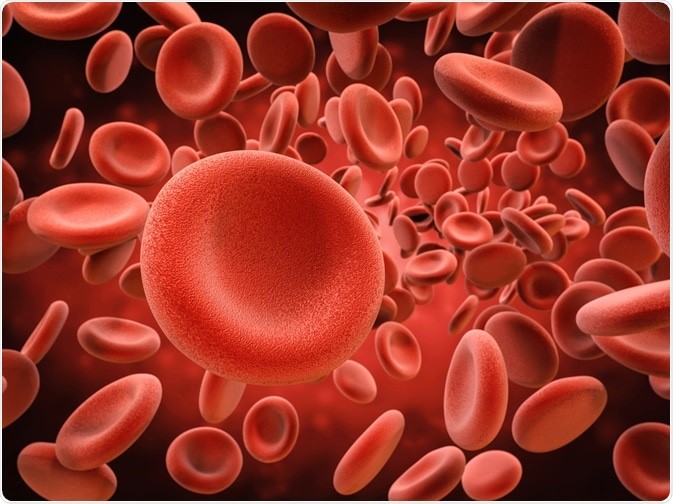RED BLOOD CELLS

Disclaimer: Copyright infringement not intended.
Context
- A study on ‘Red Blood Cells' Protective Role in Heart Attack and Dietary Enhancement’ was conducted by Karolinska Institutet in Sweden, in collaboration with Karolinska University Hospital.
Details
Key Findings
- Protective Role of Red Blood Cells: Red blood cells, which transport oxygen from the lungs to cells and carbon dioxide back to the lungs, have an intrinsic function of protecting against heart injury caused by myocardial infarction (heart attack). This protection occurs when red blood cells are exposed to low oxygen levels.
- Enhancement with a Nitrate-Rich Diet: The protective effect of red blood cells against heart injury is further enhanced by a diet rich in nitrates. Nitrates are commonly found in nitrate-rich vegetables like arugula and other green leafy vegetables.
Significance
- The research findings indicate that red blood cells may play a crucial role in protecting against heart injury during conditions of low oxygen levels.
- The study suggests that a simple dietary intervention, such as increasing the consumption of nitrate-rich vegetables, could enhance the protective properties of red blood cells against heart injury.
- The results may have significant implications for individuals at risk of myocardial infarction (heart attack).
About
- Red Blood Cells (RBCs), also known as erythrocytes, are one of the major components of blood and play a crucial role in the circulatory system.
- These small, biconcave-shaped cells are primarily responsible for transporting oxygen from the lungs to various tissues and organs throughout the body and returning carbon dioxide to the lungs for elimination.
Structure of Red Blood Cells
- Shape: RBCs are biconcave discs, which means they have a depression on both sides, resembling a donut without a hole. This unique shape increases the surface area of the cell, allowing for efficient gas exchange.
- Size: They are small cells, with an average diameter of about 6-8 micrometers in humans.
- Lack of Nucleus: Unlike most other cells in the body, RBCs lack a nucleus. This absence of a nucleus allows for more space to carry hemoglobin, the oxygen-binding protein.
- Hemoglobin: Hemoglobin is the iron-containing molecule that gives RBCs their red color and enables them to transport oxygen. Each RBC contains millions of hemoglobin molecules.
Functions of Red Blood Cells
- Oxygen Transport: The primary function of RBCs is to transport oxygen from the lungs to the body's tissues. Hemoglobin binds to oxygen in the lungs and releases it in tissues where oxygen is needed.
- Carbon Dioxide Transport: RBCs also play a role in carrying carbon dioxide, a waste product of metabolism, from tissues to the lungs, where it is exhaled.
Production of Red Blood Cells
- RBCs are produced in the bone marrow through a process called erythropoiesis, which is regulated by the hormone erythropoietin (EPO) produced by the kidneys.
- The process involves the maturation of hematopoietic stem cells into mature RBCs.
Lifespan of Red Blood Cells
- The average lifespan of an RBC is about 120 days.
- After this period, they are removed from circulation by the spleen and liver, and their components are recycled.
Red Blood Cell Disorders
- Anemia: Anemia is a condition characterized by a lower than normal number of RBCs or a decreased amount of hemoglobin. This leads to reduced oxygen-carrying capacity, resulting in fatigue, weakness, and other symptoms.
- Polycythemia: Polycythemia is a condition in which there is an excess of RBCs in the blood, making the blood thicker and more viscous. This can lead to increased risk of clot formation and other complications.
- Sickle Cell Disease: Sickle cell disease is a genetic disorder that causes RBCs to take on a crescent or sickle shape. These abnormal cells can block blood flow, leading to pain and organ damage.
- Thalassemia: Thalassemia is a group of genetic blood disorders that result in abnormal hemoglobin production, leading to anemia and other health issues.
Significance in Healthcare
- Blood Transfusions: RBC transfusions are essential in the treatment of anemia, blood loss due to surgery or injury, and certain medical conditions that affect RBC production.
- Diagnostics: RBC counts, hemoglobin levels, and hematocrit values are routinely measured in blood tests to diagnose and monitor various medical conditions.
- Medication Development: Understanding RBC physiology is crucial for developing medications to treat conditions like anemia, sickle cell disease, and thalassemia.
Conclusion
In conclusion, red blood cells are vital components of the circulatory system, responsible for oxygen transport and maintaining overall health. Understanding their structure, functions, production, and associated disorders is essential for healthcare professionals and individuals seeking to maintain a healthy lifestyle.
|
PRACTICE QUESTION Q. Which of the following statements about Red Blood Cells (RBCs) is/are correct? 1. RBCs have a nucleus that contains hemoglobin. 2. The primary function of RBCs is to transport oxygen from the lungs to the body's tissues. 3. RBCs have a lifespan of approximately 180 days in the bloodstream. Options: A) All three statements are correct. B) Only statements 1 and 2 are correct. C) Only statement 2 is correct. D) None of the statements are correct. Answer: C) |





1.png)
